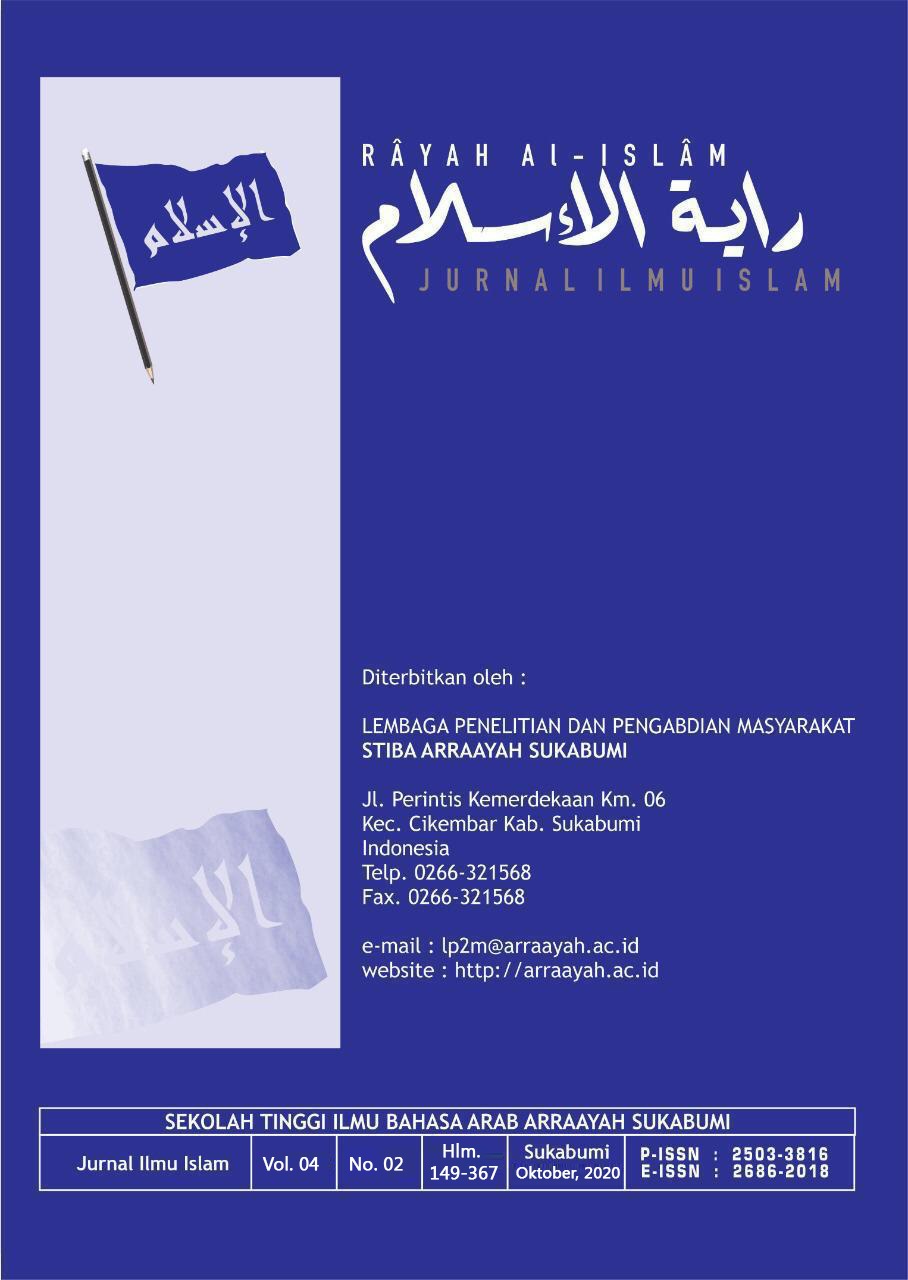Main Article Content
Abstract
This paper aims to find out Mohammad Natsir's triple helix concept and its relevance and implementation in da'i education in Indonesia. The method used is descriptive qualitative, data is taken from literature sources. The results revealed that Mohammad Natsir's trilpe helix concept was to integrate three institutions in the da'i education process, namely masjid (mosque), pesantren, and kampus (university). This concept is considered relevant to the conditions and culture in Indonesia because it has the characteristics of Indonesian culture. This concept is implemented by integrating the curriculum between kampus and pesantren, kampus and masjid. Opportunities for integration between the three institutions are increasingly open with the support of the concept of an merdeka belajar dan kampus merdeka which was proclaimed by the Ministry of Education and Culture of the Republic of Indonesia. The realization of this concept can be in the form of creating joint projects between kampus and masjid by involving students in managing mosques and managing community empowerment programs together. The implementation of the integration of the kampus and pesantrens curriculum can be carried out in the context of the transmission of Islamic knowledge and the education of the da'i character which is very conducive to being carried out in a pesantren atmosphere.
Keywords
Article Details
Authors who publish with this journal agree to the following terms:
- Authors retain copyright and grant the journal right of first publication with the work simultaneously licensed under a Creative Commons Attribution-ShareAlike 4.0 International License that allows others to share the work with an acknowledgment of the work's authorship and initial publication in this journal.
- Authors are able to enter into separate, additional contractual arrangements for the non-exclusive distribution of the journal's published version of the work (e.g., post it to an institutional repository or publish it in a book), with an acknowledgment of its initial publication in this journal.
- Authors are permitted and encouraged to post their work online (e.g., in institutional repositories or on their website) prior to and during the submission process, as it can lead to productive exchanges, as well as earlier and greater citation of published work (See The Effect of Open Access).
References
- Assiroji, D. B. (2020). Konsep Kaderisasi Ulama di Indonesia. Edukasi Islami: Jurnal Pendidikan Islam, 9(1). https://doi.org/DOI : 10.30868/ei.v9i01.661
- Bachtiar, T. A. (2018). Jas Mewah, Jangan Sekali-kali Melupakan Sejarah dan Dakwah. Pro-U Media.
- DDII. (2011). Proyek Strategis Dewan Dakwah Islamiyyah Indonesia.
- Dewan Dakwah Islamiyyah Indonesia. (2020). Simposium Nasional Tiga Pilar Dakwah (Masjid Pesantren Kampus). Dakho TV. https://www.youtube.com/watch?v=5zrfslM8g0c&ab_channel=dakhotv
- Firdaus, R., Al Farisi, K. A., & Mandala, R. (2019). Istratijiyat Ta’lim Al-lughoh Al-Arabiyyah fi Ashri Aulamah. Studi Arab, 10(2), 131–150. https://doi.org/https://doi.org/10.35891/sa.v10i2.1857
- Gaus, H. L. (2019). Wahyu Memandu Ilmu. TVRI Jawa Barat. https://www.youtube.com/watch?v=czTAUu8HnRI
- Hakam, K. A. (2018). Tradition of Value Education Implementation in Indonesian Primary Schools. Journal of Social Studies Education Research, 9(4), 295–318.
- Hakiem, L. (2019). Biografi Mohammad Natsir, Kepribadian, Pemikiran dan Perjuangan (Artawijaya (ed.); Pertama). Pustaka Al-Kautsar.
- Humas DDII Pusat. (2020). Mengapa Dewan Da’wah Didirikan. https://www.youtube.com/watch?v=rTp7_yvHdfY&feature=youtu.be
- Husaini, A., & Setiawan, B. G. (2020). Pemikiran dan Perjuangan M. Nastsir dan HAMKA Dalam Pendidikan. Gema Insani.
- Malim, M., & Solihin, A. (2010). Dinamika dan Strategi Da’wah (M. Sulthoni (ed.); 2nd ed.). Media Da’wah.
- Natsir, M. (2015). Capita Selecta (5th ed.). LAZIS DEWAN DA’WAH.
- Natsir, M. (2017). Fiqhud Da’wah (15th ed.). Dewan Da’wah islamiyah Indonesia.
- Rabbanie, abu T., Qomaruddien;, T. R., Hadi Nur Ramadhan;, & Jeje Zainuddin. (2019). Tiga Pilar Da’wah, Masjid, Pesantren, Kampus Konsepsi, sinergi dan Aksi. Dewan Da’wah islamiyah Indonesia.
- Ridla, M. R., Rifa’i, A., & Suisyanto. (2017). Pengantar Ilmu Dakwah: Sejarah, Perpspektif dan Ruang Lingkup (I. Rahmat & B. M. A. Kusuma (eds.); 1st ed.). Samudra Biru.
- Rizal, A. S. (2017). Pendidikan Islam Sebagai Alat Rekayasa Sosial Membina Ummatan Shalihah. Taklim: Jurnal Pendidikan Agama Islam, 15(2). http://jurnal.upi.edu/file/01_PENDIDIKAN_ISLAM_SEBAGAI_ALAT_REKAYASA_SOSIAL_-_Rizal.pdf
- Rokhman, S. (2017, February). Tokoh Dewan Dakwah Setia Menjaga NKRI. MIMBAR STID Mohammad Natsir, 6.
- Soewardi, H. (2001). Roda Berputar Dunia Bergulir: Kognisi Terbaru Tentang Timbul Tenggelamnya Sivilisasi. Mandiri Bakti.
- Sukamto. (1999). Kepemimpinan Kiai Dalam Pesantren (I). LP3ES.
- Zainuddin, J. (2012). Fiqih Dakwah Jam’iyyah. Islam Media.
- Zubaidi, M. N. (2019). Optimalisasi Tiga Pilar Dakwah (Masjid, Pesantren, Kampus). Dewan Da’wah islamiyah Indonesia.
